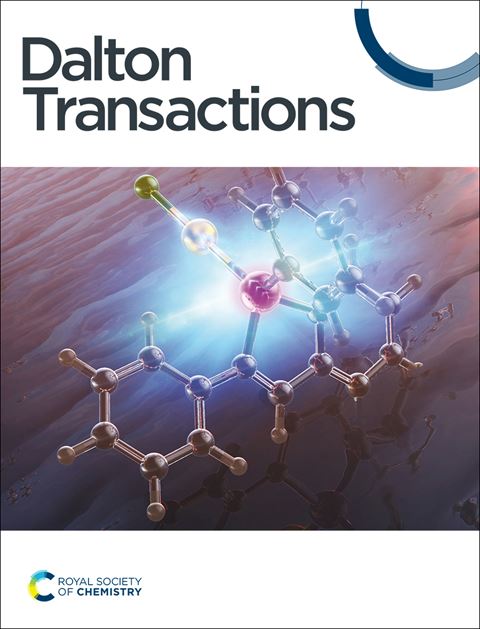基于多金属氧酸盐complex@graphene的复合电极,用于硝酸盐高效还原为氨。
IF 3.5
3区 化学
Q2 CHEMISTRY, INORGANIC & NUCLEAR
引用次数: 0
摘要
为了取代高能耗、高污染的传统氨合成工艺,本研究设计了两种基于多金属氧酸盐(POM)的镍/钴金属有机复合催化剂,即(HNCP)2[Ni(H2O)4]2[NiMo12(HPO4)4(PO4)4O30] (Ni- p4mo6)和(HNCP)2[Co(H2O)4]2[CoMo12(HPO4)4(PO4)4O30] (Co- p4mo6)。这些催化剂以{P4Mo6}为结构单元,以镍/钴为金属节点,以π共轭有机配体为连接体,负载于氧化石墨烯(GO)上,以提高其电导率和反应接触面积。实验结果表明,在酸性电解质中,Ni-P4Mo6/GO的氨收率为2.62 mg h-1 mg-1cat。在-0.6 V时(相对于RHE),在-0.5 V时的法拉第效率(FE)为83.9%,优于Co-P4Mo6/GO (1.63 mg h-1 mg-1cat)。-0.7 V;-0.3 V时FE为85.3%)。在中性条件下,两种催化剂(Ni-P4Mo6/GO: 11.6 mg h-1 mg-1cat)的性能均有显著提高。收率:88.4% FE;Co-P4Mo6/GO: 11.1 mg h-1 mg-1cat。收率为78.5% (FE),优于大多数同类催化剂。本研究为开发高效硝酸还原氨电催化剂(e-NO3RR)提供了新思路。本文章由计算机程序翻译,如有差异,请以英文原文为准。
Polyoxometalate-based complex@graphene composite electrodes for efficient nitrate reduction to ammonia.
To replace the energy-intensive and polluting traditional ammonia synthesis process, in this study, we designed two polyoxometalate (POM)-based nickel/cobalt metal-organic composite catalysts, namely (HNCP)2[Ni(H2O)4]2[NiMo12(HPO4)4(PO4)4O30] (Ni-P4Mo6) and (HNCP)2[Co(H2O)4]2[CoMo12(HPO4)4(PO4)4O30] (Co-P4Mo6). These catalysts utilized {P4Mo6} as the structural unit, nickel/cobalt as the metal node, and π-conjugated organic ligands as the linkers, and they were loaded onto graphene oxide (GO) to enhance the conductivity and reaction contact area. Experimental results showed that in acidic electrolytes, Ni-P4Mo6/GO achieved an ammonia yield of 2.62 mg h-1 mg-1cat. at -0.6 V (vs. RHE) with a faradaic efficiency (FE) of 83.9% at -0.5 V, outperforming Co-P4Mo6/GO (1.63 mg h-1 mg-1cat. at -0.7 V; FE 85.3% at -0.3 V). Under neutral conditions, both the catalysts exhibited significantly improved performances (Ni-P4Mo6/GO: 11.6 mg h-1 mg-1cat. yield, 88.4% FE; Co-P4Mo6/GO: 11.1 mg h-1 mg-1cat. yield, 78.5% FE), surpassing most comparable catalysts. This work provides a novel strategy for developing efficient electrocatalysts for nitrate reduction to ammonia (e-NO3RR).
求助全文
通过发布文献求助,成功后即可免费获取论文全文。
去求助
来源期刊

Dalton Transactions
化学-无机化学与核化学
CiteScore
6.60
自引率
7.50%
发文量
1832
审稿时长
1.5 months
期刊介绍:
Dalton Transactions is a journal for all areas of inorganic chemistry, which encompasses the organometallic, bioinorganic and materials chemistry of the elements, with applications including synthesis, catalysis, energy conversion/storage, electrical devices and medicine. Dalton Transactions welcomes high-quality, original submissions in all of these areas and more, where the advancement of knowledge in inorganic chemistry is significant.
 求助内容:
求助内容: 应助结果提醒方式:
应助结果提醒方式:


